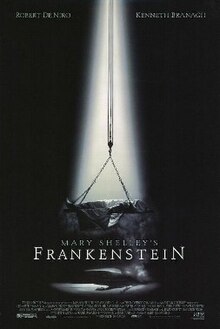
Frankenstein is a 1931 American pre-Code science fiction horror film directed by James Whale, produced by Carl Laemmle Jr., and adapted from a 1927 play by Peggy Webling, which in turn was based on Mary Shelley's 1818 novel Frankenstein; or, The Modern Prometheus. The Webling play was adapted by John L. Balderston and the screenplay written by Francis Edward Faragoh and Garrett Fort, with uncredited contributions from Robert Florey and John Russell.

Frankenstein's monster or Frankenstein's creature, also commonly known as Frankenstein, is a fictional character who first appeared in Mary Shelley's 1818 novel Frankenstein; or, The Modern Prometheus as the main antagonist. Shelley's title thus compares the monster's creator, Victor Frankenstein, to the mythological character Prometheus, who fashioned humans out of clay and gave them fire.

The Curse of Frankenstein is a 1957 British horror film by Hammer Film Productions, loosely based on the 1818 novel Frankenstein; or, The Modern Prometheus by Mary Shelley. It was Hammer's first colour horror film, and the first of their Frankenstein series. Its worldwide success led to several sequels, and it was also followed by new versions of Dracula (1958) and The Mummy (1959), establishing "Hammer Horror" as a distinctive brand of Gothic cinema.

Victor Frankenstein is a fictional character and the main protagonist and title character in Mary Shelley's 1818 novel, Frankenstein; or, The Modern Prometheus. He is a Swiss scientist who, after studying chemical processes and the decay of living things, gains an insight into the creation of life and gives life to his own creature. Victor later regrets meddling with nature through his creation, as he inadvertently endangers his own life and the lives of his family and friends when the creature seeks revenge against him. He is first introduced in the novel when he is seeking to catch the monster near the North Pole and is saved from near death by Robert Walton and his crew.
Dr. Waldman is a fictional character who appears in Mary Shelley's 1818 novel, Frankenstein; or, The Modern Prometheus and in its subsequent film versions. He is a professor at Ingolstadt University who specializes in chemistry and is a mentor of Victor Frankenstein.
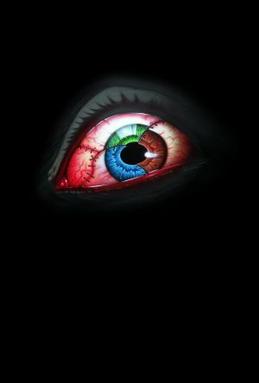
Frankenstein Unbound is a 1990 science fiction horror film based on Brian Aldiss' 1973 novel of the same name, starring John Hurt, Raul Julia, Bridget Fonda, Jason Patric, and Nick Brimble. The film is co-written and directed by Roger Corman, returning to the director's chair after a hiatus of almost twenty years. This is his final directorial effort to date, for which he was paid $1 million to direct.
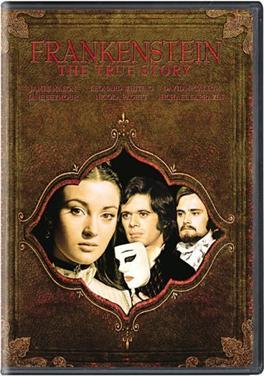
Frankenstein: The True Story is a 1973 British made-for-television film loosely based on the 1818 novel Frankenstein; or, The Modern Prometheus by Mary Shelley. It was directed by Jack Smight, and the screenplay was written by novelist Christopher Isherwood and his longtime partner Don Bachardy.

Mary Shelley's 1818 novel Frankenstein; or, The Modern Prometheus, and the famous character of Frankenstein's monster, have influenced popular culture for at least a century. The work has inspired numerous films, television programs, video games and derivative works. The character of the Monster remains one of the most recognized icons in horror fiction.

Life Without Soul (1915) is a lost horror film, directed by Joseph W. Smiley and written by Jesse J. Goldburg. This film is an adaptation of Mary Shelley's 1818 Gothic novel Frankenstein; or, The Modern Prometheus. The film is about a doctor who creates a soulless man. In the end, it turns out that a young man has dreamed the events of the film after falling asleep reading Shelley's novel.

Mary Shelley's Frankenstein is an action platformer video game based on the 1994 film of the same name, an adaptation of Mary Shelley's 1818 novel Frankenstein; or, The Modern Prometheus.

Mary Shelley's Frankenstein is a 1995 pinball machine released by Sega Pinball. It is based in the film of the same name.

Frankenstein is a 2004 American television miniseries based on the 1818 novel Frankenstein; or, The Modern Prometheus by Mary Shelley. It follows the original novel more closely than other adaptations.

Frankenstein – A New Musical is a stage musical adaptation of Mary Shelley's 1818 novel Frankenstein; or, The Modern Prometheus, with music by Mark Baron and book and lyrics by Jeffrey Jackson, based on a story adaptation by Gary P. Cohen. It premiered in New York City on November 1, 2007 in the off-Broadway theater 37 Arts and was directed by Bill Fennelly. The cast featured Hunter Foster as Victor Frankenstein, Steve Blanchard as The Creature, and Christiane Noll as Elizabeth. The show was produced by Gerald Goehring, Douglas C. Evans, Michael F. Mitri, and David S. Stone, in association with Barbara & Emery Olcott.

Frankenstein; or, The Modern Prometheus is an 1818 novel written by English author Mary Shelley. Frankenstein tells the story of Victor Frankenstein, a young scientist who creates a sapient creature in an unorthodox scientific experiment. Shelley started writing the story when she was 18, and the first edition was published anonymously in London on 1 January 1818, when she was 20. Her name first appeared in the second edition, which was published in Paris in 1821.
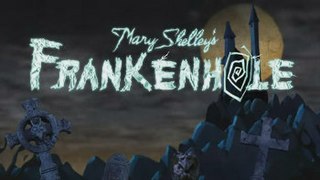
Mary Shelley's Frankenhole is an American adult stop motion-animated television series created by Dino Stamatopoulos for Cartoon Network's late night programming block Adult Swim. The series premiered on June 27, 2010 and ended on March 25, 2012, with a total of 20 episodes, over the course of 2 seasons.

Frankenstein is a television horror film first aired in 1992, based on Mary Shelley's 1818 novel Frankenstein; or, The Modern Prometheus. It was produced by Turner Pictures and directed by David Wickes.

Frankenstein is a stage adaptation by Nick Dear of Mary Shelley's 1818 novel Frankenstein; or, The Modern Prometheus.

Elizabeth Frankenstein is a fictional character first introduced in Mary Shelley's 1818 novel Frankenstein; or, The Modern Prometheus. In both the novel and its various film adaptations, she is the fiancée of Victor Frankenstein.
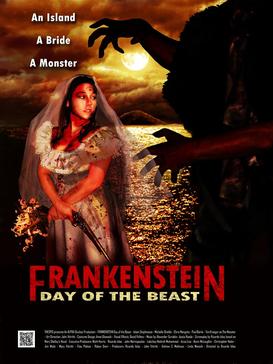
Frankenstein: Day of the Beast is a 2011 independent horror film directed by Ricardo Islas, based on the 1818 novel Frankenstein; or, The Modern Prometheus by Mary Shelley. It premiered with a limited theatrical release in the United States on November 27, 2011.

The Bride of Frankenstein is a fictional character first introduced in Mary Shelley's 1818 novel Frankenstein; or, The Modern Prometheus and later in the 1935 film Bride of Frankenstein. In the film, the Bride is played by Elsa Lanchester. The character's design in the film features a conical hairdo with white lightning-trace streaks on each side, which has become an iconic symbol of both the character and the film.
